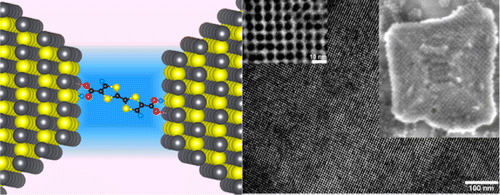We use the organic semiconductor tetrathiafulvalene dicarboxylate (TTFDA) to assemble PbS nanocrystals into conductive mesocrystals. Density functional theory calculations predict a size-tunable, near-resonant alignment between the PbS 1Sh state and the TTFDA HOMO with the potential to form a conductive channel for holes. We test this hypothesis with transport measurements on TTFDA-functionalized PbS nanocrystals of different sizes and find a pronounced modulation of the field-effect hole mobilities. Photothermal deflection spectroscopy reveals unchanged Urbach energies after ligand exchange, whereas further surface modification by colloidal-atomic layer deposition leads to a strong increase in the density of in-gap states. Hole transport in PbS-TTFDA is unusually robust against such surface modification. Our structural analysis of the mesocrystals suggests that TTFDA induces a defined interparticle spacing, the orientation of atomic lattices, and the angle within the mesocrystal unit cell. The results of this work pave the way toward conductive mesocrystalline assemblies of hybrid semiconductor nanostructures with size-tunable transport properties.

We use the organic semiconductor tetrathiafulvalene dicarboxylate (TTFDA) to assemble PbS nanocrystals into conductive mesocrystals. Density functional theory calculations predict a size-tunable, near-resonant alignment between the PbS 1Sh state and the TTFDA HOMO with the potential to form a conductive channel for holes. We test this hypothesis with transport measurements on TTFDA-functionalized PbS nanocrystals of different sizes and find a pronounced modulation of the field-effect hole mobilities. Photothermal deflection spectroscopy reveals unchanged Urbach energies after ligand exchange, whereas further surface modification by colloidal-atomic layer deposition leads to a strong increase in the density of in-gap states. Hole transport in PbS-TTFDA is unusually robust against such surface modification. Our structural analysis of the mesocrystals suggests that TTFDA induces a defined interparticle spacing, the orientation of atomic lattices, and the angle within the mesocrystal unit cell. The results of this work pave the way toward conductive mesocrystalline assemblies of hybrid semiconductor nanostructures with size-tunable transport properties.
